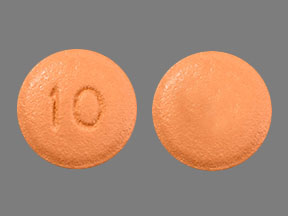Uptravi Side Effects
Generic name: selexipag
Medically reviewed by Drugs.com. Last updated on Sep 14, 2023.
Note: This document contains side effect information about selexipag. Some dosage forms listed on this page may not apply to the brand name Uptravi.
Applies to selexipag: oral tablet. Other dosage forms:
Serious side effects of Uptravi
Along with its needed effects, selexipag (the active ingredient contained in Uptravi) may cause some unwanted effects. Although not all of these side effects may occur, if they do occur they may need medical attention.
Check with your doctor immediately if any of the following side effects occur while taking selexipag:
Incidence not known
- Blue lips and fingernails
- chest pain
- coughing that sometimes produces a pink frothy sputum
- difficult, fast, noisy breathing
- increased sweating
- pale skin
- swelling in the legs and ankles
Other side effects of Uptravi
Some side effects of selexipag may occur that usually do not need medical attention. These side effects may go away during treatment as your body adjusts to the medicine. Also, your health care professional may be able to tell you about ways to prevent or reduce some of these side effects.
Check with your health care professional if any of the following side effects continue or are bothersome or if you have any questions about them:
More common
- Decreased appetite
- diarrhea
- feeling of warmth
- headache
- joint pain
- muscle aching or cramping
- muscle pains or stiffness
- nausea
- pain in the jaw, arms, or legs
- rash
- redness of the face, neck, arms, and occasionally, upper chest
- swollen joints
- vomiting
For Healthcare Professionals
Applies to selexipag: intravenous injection, oral tablet.
Cardiovascular
Very common (10% or more): Flushing (up to 12%), sinus tachycardia (up to 11.3%)
Common (1% to 10%): Hypotension
Frequency not reported: Hot flush
Postmarketing reports: Symptomatic hypotension[Ref]
Gastrointestinal
Very common (10% or more): Diarrhea (up to 42%), nausea (up to 34%), vomiting (up to 18%)
Common (1% to 10%): Abdominal pain, dyspepsia, abdominal discomfort
Frequency not reported: Ascites[Ref]
General
The most frequently reported side effects included headache, diarrhea, jaw pain, nausea, myalgia, vomiting, pain in extremity, and flushing.[Ref]
Dermatologic
Very common (10% or more): Rash (11%)
Common (1% to 10%): Urticaria, erythema[Ref]
Endocrine
Common (1% to 10%): Hyperthyroidism, thyroid stimulating hormone decreased[Ref]
Hematologic
Common (1% to 10%): Anemia, hemoglobin decreased[Ref]
Local
Frequency not reported (injection): Infusion-site reactions (erythema, redness, pain, swelling)
Metabolic
Common (1% to 10%): Appetite decreased[Ref]
Musculoskeletal
Very common (10% or more): Jaw pain (26%), pain in extremity (up to 17%), myalgia (up to 16%), arthralgia (up to 11%)
Common (1% to 10%): Musculoskeletal pain, neck pain
Frequency not reported: Bone pain[Ref]
Nervous system
Very common (10% or more): Headache (up to 65%)
Frequency not reported: Burning sensation[Ref]
Ocular
Common (1% to 10%): Eye pain, retinal disorder[Ref]
Oncologic
Common (1% to 10%): Malignancy[Ref]
Other
Common (1% to 10%): Asthenia, pyrexia, pain, influenza, weight decreased[Ref]
Renal
Frequency not reported: Acute renal failure
Respiratory
Very common (10% or more): Nasopharyngitis (13%)
Common (1% to 10%): Nasal congestion
Frequency not reported: Pulmonary veno-occlusive disease[Ref]
Frequently asked questions
More about Uptravi (selexipag)
- Check interactions
- Compare alternatives
- Pricing & coupons
- Reviews (25)
- Drug images
- Dosage information
- During pregnancy
- Generic availability
- FDA approval history
- Drug class: agents for pulmonary hypertension
- En español
Patient resources
- Uptravi drug information
- Uptravi (Selexipag Intravenous) (Advanced Reading)
- Uptravi (Selexipag Oral) (Advanced Reading)
Professional resources
Related treatment guides
References
1. Cerner Multum, Inc. UK Summary of Product Characteristics.
2. Cerner Multum, Inc. Australian Product Information.
3. Product Information. Uptravi (selexipag). Actelion Pharmaceuticals US Inc. 2016.
Further information
Always consult your healthcare provider to ensure the information displayed on this page applies to your personal circumstances.
Some side effects may not be reported. You may report them to the FDA.

